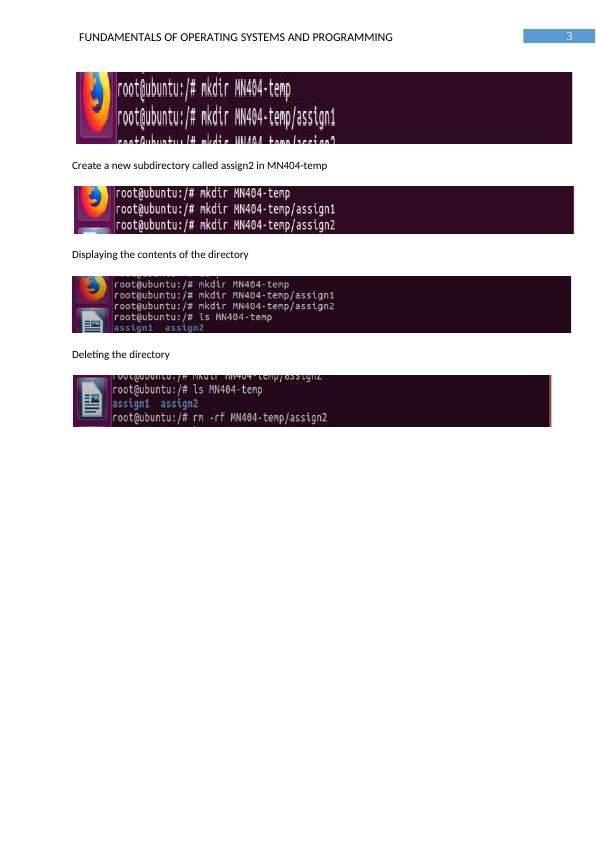Fundamentals of Operating Systems and Programming - Desklib
This assignment assesses the role of Operating Systems (OS) and its different subsystems in controlling computer hardware, as well as competency in the use of a command line interface to operate and perform simple OS administration.
11 Pages1202 Words234 Views
Added on 2023-06-13
About This Document
This article covers the fundamentals of operating systems and programming, including the services provided by operating systems, similarities and differences between Linux and Windows, multiprocessing systems, and batch processing operating systems. Additionally, it provides hands-on experience with directory navigation, file manipulation using wildcards, and using wc, date, and du commands. Course code, course name, and college/university are not mentioned.
Fundamentals of Operating Systems and Programming - Desklib
This assignment assesses the role of Operating Systems (OS) and its different subsystems in controlling computer hardware, as well as competency in the use of a command line interface to operate and perform simple OS administration.
Added on 2023-06-13
ShareRelated Documents
End of preview
Want to access all the pages? Upload your documents or become a member.
Fundamentals of OS and Linux Programming - PDF
|16
|897
|47
(PDF) Introduction to Operating System
|11
|1246
|34
Introduction to Operating System (PDF)
|14
|1031
|86
Fundamentals of Operating System
|20
|1347
|22
Fundamentals of Operating Systems and Programming
|14
|1522
|70
Fundamentals of Operating Systems and Programming
|16
|1471
|99




